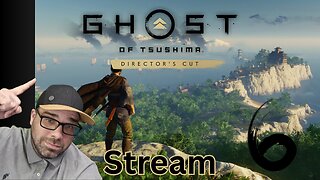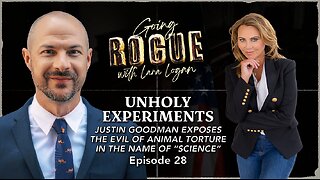Premium Only Content

Beyond Earth: Life on Mars! Have we found it?
The Viking mission, launched by NASA in the 1970s, represents a significant milestone in humanity's exploration of Mars. The Viking landers, specifically, aimed to uncover whether Mars harbored any signs of life. While the mission provided invaluable information about the Red Planet, it also sparked a long-standing dispute over the evidence for potential life on Mars. This essay will delve into the Viking Lander program and explore the polarizing debate surrounding the discovery of life on the neighboring planet.
The Viking Lander Mission:
In 1976, NASA successfully deployed two identical Viking landers, Viking 1 and Viking 2, on the Martian surface. These robotic spacecraft were equipped with an array of scientific instruments to study the planet's atmosphere, geology, and search for signs of microbial life. The Viking landers carried out extensive experiments, including the Labeled Release (LR) experiment and the Gas Chromatograph-Mass Spectrometer (GC-MS) analysis.
The Labeled Release Experiment:
The Viking landers' Labeled Release (LR) experiment aimed to detect metabolic activity in the Martian soil, which could potentially indicate the presence of microbial life. The LR experiment involved introducing a nutrient-rich solution containing radioactive carbon-14 into the soil and monitoring for the release of radioactive gases. Both landers produced positive results, as they recorded the release of radioactive gases, implying biological activity.
The Gas Chromatograph-Mass Spectrometer Analysis:
In addition to the LR experiment, the Viking landers employed the Gas Chromatograph-Mass Spectrometer (GC-MS) to analyze soil samples. The GC-MS instrument heated the samples to identify and measure any organic compounds present. Surprisingly, the results from the GC-MS analysis showed no conclusive evidence of organic compounds, which led to significant controversy and debate.
The Dispute and Interpretation of Findings:
The discrepancy between the positive LR results and the lack of organic compounds detected by the GC-MS sparked a heated scientific dispute. Some scientists argued that the LR experiment indicated the presence of microbial life on Mars. They suggested that the absence of organic compounds in the GC-MS analysis might be due to the destructive nature of the heating process, which could have destroyed the delicate organic molecules present.
On the other hand, skeptics proposed alternative explanations for the LR results. They hypothesized that the release of gases might have been caused by non-biological chemical reactions, such as the presence of oxidants or reactive minerals in the soil. They argued that the absence of organic compounds in the GC-MS analysis was a strong indication against the presence of life.
Continued Exploration and New Perspectives:
The Viking landers' controversial results prompted a reassessment of the data and the development of new perspectives in the search for life on Mars. Subsequent missions, such as the Mars rovers and the more recent Mars Science Laboratory (Curiosity), focused on studying Mars' habitability and potential for ancient microbial life. These missions aimed to address the limitations of the Viking experiments, employing more sophisticated instruments and techniques to provide a clearer understanding of Mars' potential for life.
Conclusion:
The Viking lander mission, with its LR experiment and GC-MS analysis, set the stage for a contentious dispute regarding the evidence for potential life on Mars. While the LR experiment suggested biological activity in the Martian soil, the absence of organic compounds in the GC-MS analysis raised doubts and fueled skepticism. The controversy surrounding the Viking results spurred further exploration and a reevaluation of the methods used to search for signs of life on Mars. As our understanding of the Red Planet continues to evolve, ongoing and future missions will undoubtedly shed more light on the enduring question of life beyond Earth.
Image credit NASA/JPL
-
 1:40:30
1:40:30
I_Came_With_Fire_Podcast
13 hours agoPrivate Military Contractors Are TRAFFICKING KIDS Around The United States
23.2K12 -
 LIVE
LIVE
JdaDelete
15 hours ago $1.85 earnedFinal Fantasy VII Rebirth | Jdub's Journey Part 8 - Corel Prison
217 watching -
 2:39:09
2:39:09
LFA TV
19 hours agoTHE ARK ENCOUNTER LIVE EVENT! 7.26.25 9AM EST-12PM EST
201K26 -
 3:20:34
3:20:34
Sgt Wilky Plays
4 hours agoTherapeutics with Dr Kong
12K -
 1:10:23
1:10:23
Man in America
1 day agoAre MK-Ultra Parasites Rewiring Your Brain? | Detoxing, Peptides & Parasite Warfare w/ Diane Kazer
42K56 -

TheSchleppy
1 day ago $0.70 earned✨TheSchleppy✨24HR 2 YRS ON RUMBLE STREAM! RIGHT INTO RUMBLE HALO EVENT!
13.2K5 -
 3:08:21
3:08:21
JakRazGaming
5 hours agoPlaying Ghost of Tsushima DIRECTOR'S CUT!! on PS5 Stream 6
20.9K2 -
 29:06
29:06
Scary Mysteries
1 day agoThe Corpsewood Manor Murders: Satan, Secrets, and a Savage End
18.4K13 -
 2:08:56
2:08:56
Lara Logan
1 day agoUNHOLY EXPERIMENTS: Justin Goodman Exposes the Evil of Animal Torture | Ep 28
18.9K32 -
 LIVE
LIVE
The Sufari Hub
3 hours ago🔴SUFARI AUGUST SHOWCASE 🔴W CONTENT 🔴 10 SUBS? 🔴WHAT SHALL WE DO THIS COMING MONTH?
9 watching